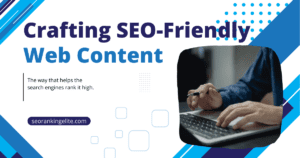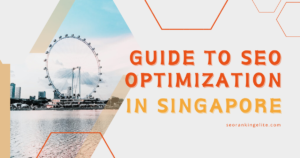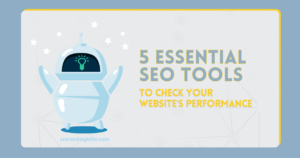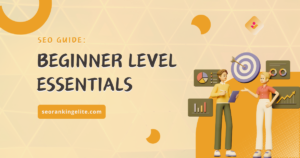Crafting SEO-Friendly Web Content
In the vast and ever-evolving digital landscape, having a website is just the first step towards establishing your online presence. To truly make an impact and attract organic traffic, mastering the art of on-page SEO is crucial.
But what exactly does it mean to create SEO-friendly web content? Fear not!
In this blog post, we will delve into the world of on-page optimization techniques that will help you climb up those search engine rankings. From title tags to user experience, we’ve got you covered with actionable tips that will ensure your website stands out from the crowd.
So let’s dive in and unlock the secrets of crafting compelling content that pleases both users and search engines alike!

Title Tags and Meta Descriptions
When it comes to on-page SEO, title tags and meta descriptions play a crucial role in grabbing the attention of both search engines and users.
The title tag is the clickable headline that appears on search engine results pages (SERPs), while the meta description provides a brief summary of what your page is about.
Crafting compelling title tags involves incorporating relevant keywords that accurately describe your content. Keep them concise yet descriptive, ideally between 50-60 characters to ensure they don’t get cut off in search results. Including power words or numbers can also make your titles more enticing.
Meta descriptions should provide a concise overview of what users can expect from your page. Aim for around 150-160 characters to optimize readability and avoid truncation on SERPs. Make sure to include valuable keywords naturally within the description, as this helps clarify relevancy for search engines.
Remember, writing unique and engaging title tags and meta descriptions not only improves click-through rates but also signals to search engines what your content is about. So take some time to craft customized tags for each page of your website – it’s worth the effort!
Header Tags and Keyword Placement
When it comes to optimizing your web content for SEO, header tags play a crucial role. Header tags, also known as H1, H2, H3 tags, are HTML elements that define the headings and subheadings within your content.
They not only help search engines understand the structure of your page but also provide a clear hierarchy for readers.
Properly utilizing header tags can improve both user experience and search engine visibility. When writing header tags, it’s important to incorporate relevant keywords naturally.
However, don’t overdo it by stuffing too many keywords into your headers – this can harm your rankings instead of boosting them.
Another key aspect of keyword placement is incorporating them throughout your content in a strategic manner. Instead of using exact-match keywords repeatedly in every sentence, focus on creating informative and engaging content that incorporates relevant variations of the target keyword.
Remember to use short sentences and paragraphs to enhance readability. By breaking up long chunks of text with headers and bullet points, you make it easier for both users and search engines to navigate through your content.
Incorporating proper header tag usage along with strategic keyword placement will not only improve the overall readability but also increase the chances of ranking higher in search engine results pages (SERPs).
So take some time to optimize these elements when crafting SEO-friendly web content!
Image Optimization Techniques
When it comes to optimizing your website for SEO, many people tend to overlook the importance of image optimization. But let me tell you, it can make a significant difference in your search engine rankings.
Here are some image optimization techniques that you should consider implementing on your website.
a) Always choose the right file format for your images.
JPEG is great for photographs and complex images, while PNG works well for graphics with transparency. By choosing the appropriate file format, you can reduce the file size without compromising on quality.
b) Compress your images before uploading them to your website.
Large image files can slow down page loading speed and negatively impact user experience. There are many online tools available that can help you compress your images without sacrificing too much quality.
c) Another important aspect of image optimization is using descriptive filenames and alt tags.
Instead of naming an image “IMG00123.jpg,” use relevant keywords in the filename such as “seo-friendly-web-content.jpg.” Similarly, include descriptive alt tags that accurately describe what the image is about.
d) Don’t forget about responsive design when optimizing images.
Ensure that your website is mobile-friendly and that all images display properly on different devices and screen sizes.
By following these image optimization techniques, you’ll not only improve the overall performance of your website but also enhance its visibility in search engine results pages (SERPs).
So take some time to optimize those visuals and watch as they work wonders for both user experience and SEO!
Internal Linking Strategies
One of the often overlooked but highly effective aspects of on-page SEO is internal linking. Internal links are hyperlinks that point from one page to another within the same website. Not only do they help improve navigation and user experience, but they also play a crucial role in SEO.
When implementing internal linking strategies, it’s important to keep a few things in mind. First, make sure your anchor text includes relevant keywords related to the destination page. This helps search engines understand what the linked page is about and improves its visibility in search results.
- Consider using descriptive anchor text that accurately reflects the content of the linked page. Instead of generic phrases like “click here” or “learn more,” use specific terms that provide context for both users and search engine crawlers.
- Another useful technique is creating cornerstone content pages that serve as hubs for related topics or categories on your website. These hub pages should have multiple internal links pointing towards them, showcasing their importance and authority within your site’s structure.
- Take advantage of contextual linking opportunities by including relevant internal links within your blog posts or articles. By connecting related content pieces together through internal links, you can create a web-like structure that enhances user engagement and encourages visitors to explore more pages on your site.
Remember not to overdo it with excessive internal links; instead, focus on quality rather than quantity. Too many irrelevant or redundant links may confuse both users and search engines alike.
In conclusion, by incorporating strategic internal linking into your on-page SEO efforts, you can boost both usability and discoverability for your website’s visitors while signaling relevance and authority to search engines.
Take some time to review your existing content and identify opportunities for adding valuable internal links throughout your site, Or you can outsource it to an SEO services agency that is good at whole website SEO optimization, and they will help you complete this internal linking audit part.
User Experience and SEO
When it comes to crafting SEO-friendly web content, one crucial aspect that often gets overlooked is user experience. While search engines are important for driving traffic to your site, it’s equally important to keep visitors engaged once they arrive.
In fact, user experience plays a significant role in determining your website’s overall ranking.
So how can you improve user experience while also optimizing your on-page SEO? Here are a few strategies:
1. Mobile-Friendly Design:
With the majority of internet users accessing websites through mobile devices, having a responsive design is essential. Make sure your website is easily accessible and navigable on smartphones and tablets.
2. Page Loading Speed:
Slow-loading pages not only frustrate users but also negatively impact your search engine rankings. Optimize image sizes, minimize HTTP requests, and leverage browser caching to improve page speed.
3. Clear Navigation:
A well-organized navigation menu helps users find what they’re looking for quickly and easily. Ensure that your menu structure makes sense, with logical categories and subcategories.
4. Engaging Content:
High-quality content that provides value to users will keep them on your site longer and encourage them to explore further. Use relevant keywords naturally within the content without overstuffing.
5. Readability:
Break up text into short paragraphs with clear headings so readers can scan through the content easily. Using bullet points or numbered lists can also make information more digestible.
6 .Interactive Elements:
Incorporating interactive elements such as quizzes, surveys, or calculators can enhance user engagement and create an enjoyable browsing experience.
7 .External Links:
Linking out to reputable sources adds credibility to your content while providing additional resources for readers seeking more information related to the topic at hand.
Remember that when it comes down to it, creating exceptional web experiences should be at the core of any successful SEO strategy.
By focusing on delivering valuable content in a visually appealing format with seamless navigation, you’ll not only please your visitors but also improve your search engine rankings.
If you want to read other topic about SEO such as Enterprise SEO, Local SEO and more on SEO Ranking Elite.
Need SEO help? Contact SEO Ranking Elite, your premier SEO service agency. Partnered with the Madex Group and Madex Academy, we deliver effective strategies for SEO success, targeting businesses in Malaysia and Singapore.





